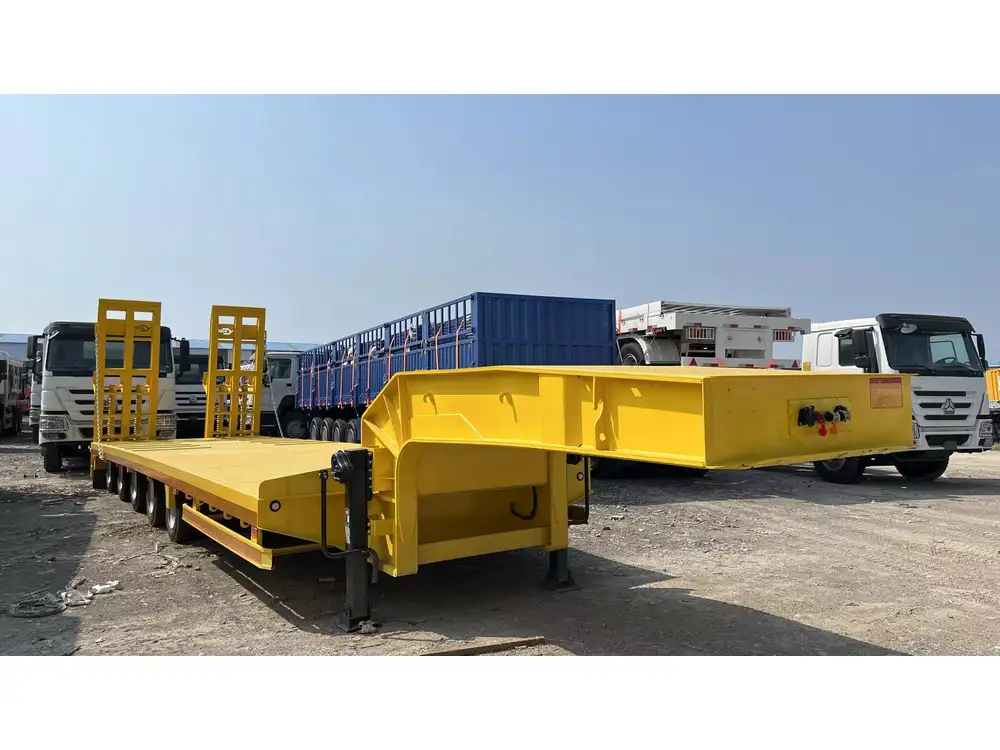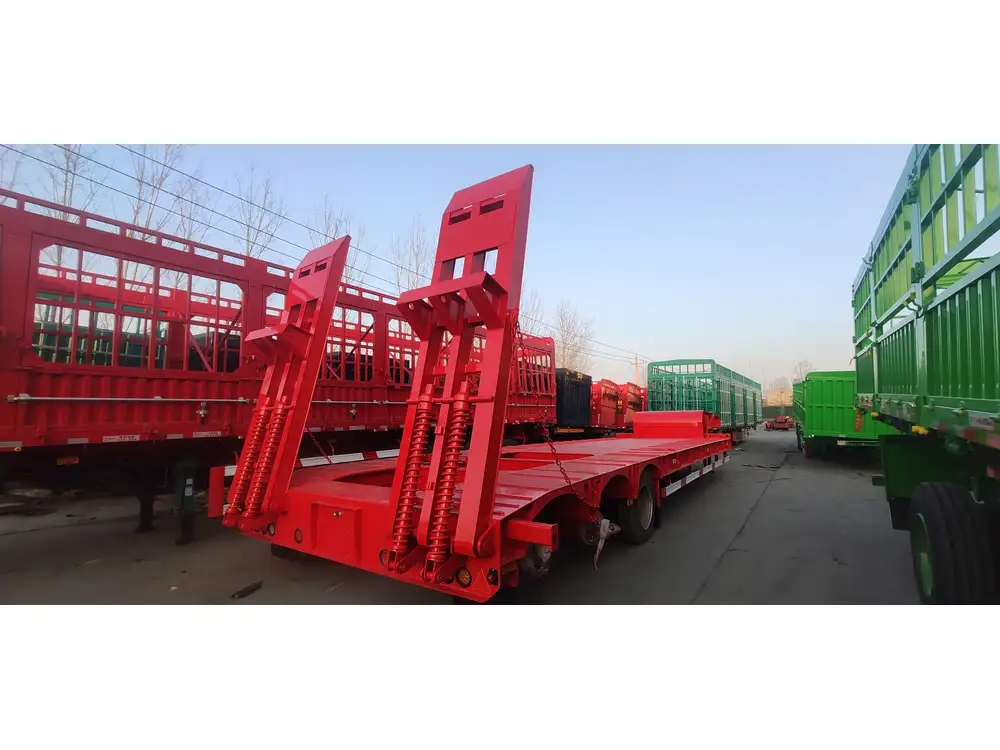In the world of heavy-duty trucks, particularly tractor-trailers, air tanks play a crucial role in the overall functionality and safety of the vehicle. Air tanks are an integral component of the air brake system, providing the necessary compressed air to ensure smooth operations, including brake actuations and suspension adjustments. However, a common query among operators, mechanics, and fleet managers concerns the gallon capacity of these air tanks.
This comprehensive guide aims to elucidate the various factors affecting air tank capacities, delve into standard specifications, and provide insights that will assist in understanding how these systems function effectively.
What Are Air Tanks in Tractor-Trailers?
Air tanks, sometimes referred to as air reservoirs, are tanks designed to store compressed air necessary for pneumatic systems in trucks. The air supplied from these tanks is vital for:
- Brake System Functionality: Engaging and disengaging brakes efficiently.
- Suspension Systems: Adjusting the ride height based on load conditions.
- Accessory Operations: Powering various onboard tools and systems.
Standard Capacities of Air Tanks

Typical Gallon Capacities
The gallon capacity of air tanks in semi-trailers generally ranges from 10 to 30 gallons, but this can vary significantly based on design and manufacturing standards. Below is a breakdown of typical sizes:
| Air Tank Size (Gallons) | Common Applications |
|---|---|
| 10-15 | Light-duty trailers, smaller trucks |
| 20-30 | Standard tractor-trailers, heavier loads |
| 40+ | Specialty vehicles, heavy-duty applications |
Factors Influencing Capacity
Several elements contribute to determining the appropriate air tank capacity for objective applications:
Vehicle Weight and Load Requirements: Heavier loads necessitate larger air tanks to maintain adequate pressure for braking efficiency.
Type of Braking System: Vehicles equipped with advanced air brake systems may require larger tanks for improved performance.
Operating Conditions: Frequent use in mountainous or challenging terrain may demand larger capacity tanks to ensure consistent brake response.
Fleet Specifics: Companies focused on particular industry demands, like logistics or construction, often opt for custom specifications that align their air tank sizes with operational needs.
Comparative Analysis of Tank Sizes
To further elucidate how capacity variations impact performance, we can consider a comparative analysis between a standard 20-gallon air tank and a larger 30-gallon variant:
| Feature | 20-Gallon Air Tank | 30-Gallon Air Tank |
|---|---|---|
| Typical Uses | Light to moderate loads | Heavy loads or specialized vehicles |
| Air Supply | Fulfills standard braking needs | Enhanced braking efficiency and responsiveness |
| Weight | Approximately 60 lbs | Approximately 90 lbs |
| Cost Implications | Lower initial investment | Higher upfront costs with potential long-term savings |
| Maintenance | Moderate maintenance demands | Increased complexity and maintenance needs |

Understanding System Performance
The efficiency of air tanks is not solely about size; it’s also essential to grasp how they work within the entire air brake system.
Pressure Maintenance: The air brake system operates best when pressure levels are maintained between 90 and 110 psi. Adequate tank capacity is necessary to refill the air quickly after brake applications, ensuring safety and responsiveness.
Air Consumption Rates: Different applications consume air at variable rates. For instance, frequent starts and stops in urban environments will require rapid refills, making tank size paramount.
Importance of Regular Inspections and Maintenance
Inspections and preventive maintenance are vital for ensuring the longevity and reliability of air tanks. Operators should consider the following points:
Corrosion Checks: Regularly inspect the exterior and interior of tanks for signs of rust or corrosion, which can compromise integrity.
Leak Detection: Conduct routine tests to identify air leaks, which can severely impact system performance.
Pressure Regulation: Monitor pressure levels during operations. A properly calibrated system is paramount for performance.
Condensation Management: Remove moisture buildup in tanks, as excessive moisture can lead to freezing in cold conditions and corroding components.
Troubleshooting Common Issues with Air Tanks
Understanding the common problems associated with air tanks can greatly enhance troubleshooting and repair efforts:

1. Insufficient Air Pressure
- Symptoms: Delayed brake response, ineffective brake engagement.
- Causes: Possible leaks, malfunctioning compressor, or inadequate tank capacity.
- Solutions: Inspect for leaks, verify compressor operation, or consider upgrading to a larger tank.
2. Air Tank Freeze-Up
- Symptoms: Brakes lock up in cold weather; air system malfunctions.
- Causes: Moisture buildup leading to ice formation.
- Solutions: Install air dryer systems to manage moisture effectively.
3. Corrosion Problems
- Symptoms: Uneven tank surfaces, rust.
- Causes: Age, environmental exposure, moisture retention.
- Solutions: Regular inspections and possibly replace corroded tanks.

Industry Trends: Advancements in Air Tank Technology
With constant advancements in truck technology, the design and functionality of air tanks have evolved significantly:
Lightweight Materials
New materials such as composite plastics and aluminum are becoming prevalent to reduce overall weight, contributing to better fuel efficiency without compromising performance.
Capacity Expansion
Modern air tanks are designed with modular systems, allowing fleets to upgrade their capabilities without complete replacements, ensuring better adaptability as operational needs change.

Smart Technology Integration
Integrating sensors for automated monitoring systems keeps operators informed on tank performance in real-time, providing alerts for maintenance needs and preventing breakdowns.
Conclusion
In summary, understanding the gallon capacity of tractor-trailer air tanks is fundamental for operators looking to optimize their vehicle’s performance and safety. With tanks typically ranging from 10 to 30 gallons, choosing the right size depends on a multifaceted analysis, including weight requirements and specific usages. Regular preventive maintenance, insightful troubleshooting, and staying abreast with industry advancements will ensure that your air tank systems remain efficient, allowing you to focus on the broader scope of your transportation objectives.
Both current and prospective truck operators can greatly benefit from recognizing the importance of air tanks in their operations—ultimately leading to safer highways and better logistics management. Investing time in understanding these systems can lead to enhanced performance and reduced operational costs over the lifespan of your fleet.



